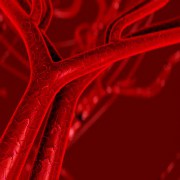 Photo: Getty Images
Photo: Getty Images
Cardiovascular disease (CVD) is the leading cause of death for women in the United States. Doctors know that high cholesterol can mean an increased risk of CVD. Yet cholesterol levels are not always considered in women’s health care, and many women chose to ignore the risks of high cholesterol. Women who are concerned about their cholesterol should be aware that the time of month when the test is done can affect the results.
Cholesterol is a waxy substance that is found in all parts of the body. It travels through the bloodstream in clumps known as lipoproteins. There are two kinds of cholesterol:
• Low-density lipoprotein - LDL is also known as “bad” cholesterol. When there is too much cholesterol in the blood, it can stick to the walls of arteries and cause blood clots. This can lead to blockages in the blood vessels that can prevent blood from reaching the heart muscles with oxygen and nutrients. These blockages can cause a heart attack. Low amounts of LDL are better.
• High-density lipoprotein – HDL is known as “good” cholesterol because it helps clear LDL out of the blood. This lowers the chance that arteries will become blocked. Higher amounts of HDL are better.
When your doctor requests a cholesterol test, he is looking at three numbers – how much LDL, how much HDL, and how much total cholesterol is found in your blood. When someone is said to have high cholesterol, that generally means there is too much LDL (bad) cholesterol and not enough HDL (good) cholesterol.
For women, just checking cholesterol levels once may not give an accurate result. Research has shown that levels of the sex hormone estrogen affect the amount of cholesterol found in the blood. During a woman’s monthly cycle, estrogen levels rise through the middle of the cycle, peaking just before an egg is released, then declining through the end of the woman’s period.
Researchers determined that as estrogen levels go up, HDL (good) cholesterol levels also go up and LDL levels go down. But as estrogen levels decline, the reverse is true as HDL drops and LDL (bad) cholesterol rises. Studies show that the difference in high and low levels for women can change as much as 19 percent during a single month.
Women who are aware of their cholesterol can lower their risk of heart disease. A healthful diet that is low in fat can help lower cholesterol and help you maintain a healthy weight. Exercise can also help lower LDL (bad) cholesterol and increase HDL (good) cholesterol.
If you are a woman and your cholesterol numbers change unexpectedly, talk to your doctor about where you were in your cycle when the test was done. A repeat of the test at a different time of month may provide a more accurate average of your total cholesterol numbers.
Sources:
National Institutes of Health News
About.com: Cholesterol
National Heart, Lung, and Blood Institute
National Women’s Health Information Center
Reviewed June 23, 2011
Edited by Alison Stanton





Add a CommentComments
There are no comments yet. Be the first one and get the conversation started!